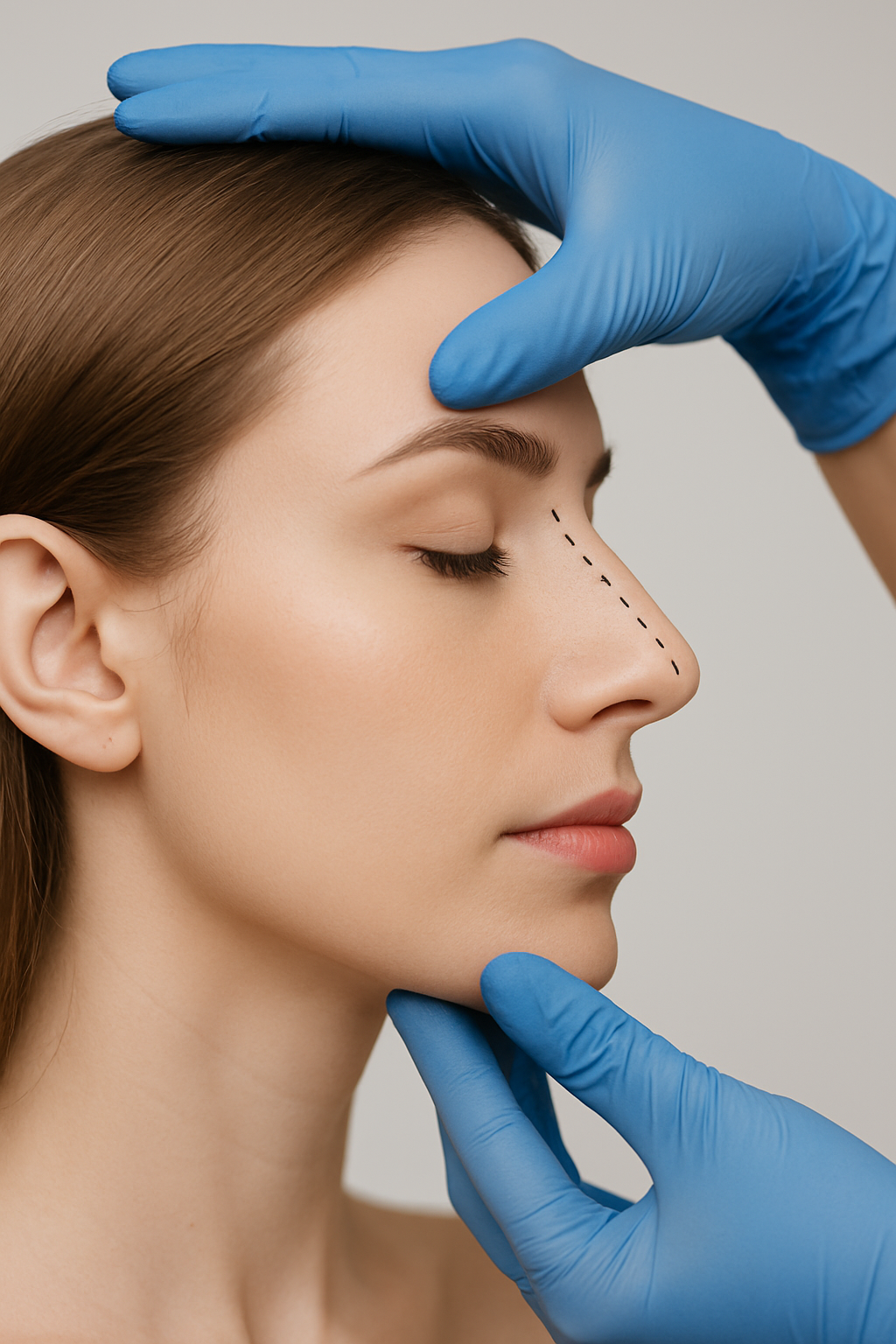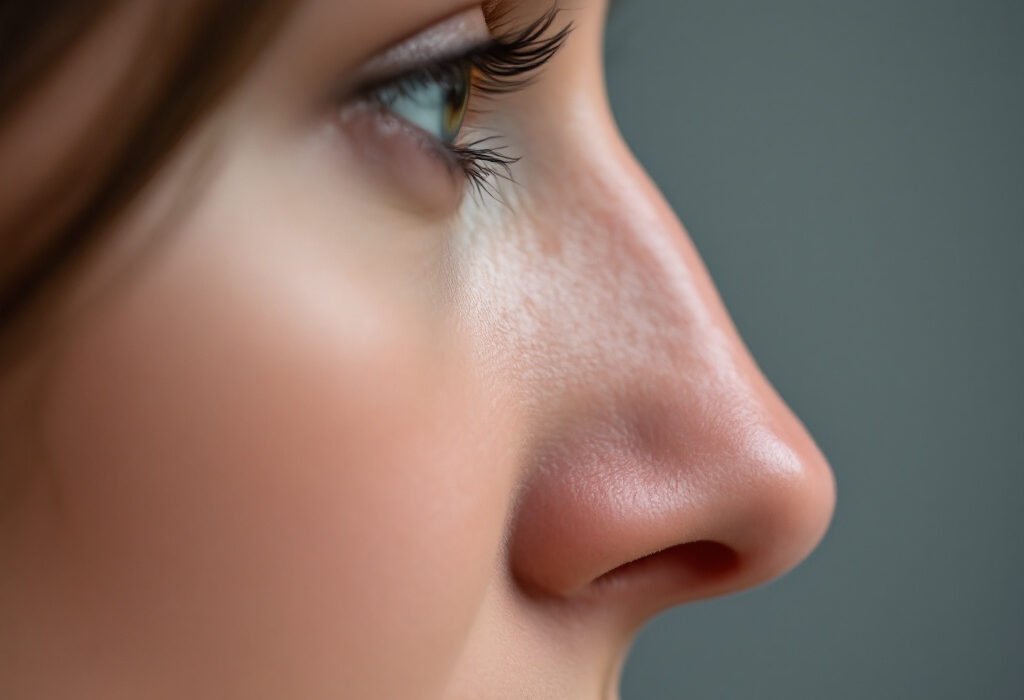Rhinoplasty for Breathing: More Than a Cosmetic Nose Job
Rhinoplasty. The word itself conjures images of Hollywood transformations, of subtle enhancements that redefine a person’s profile. It’s often seen as the ultimate cosmetic procedure, a nose job that grants a more aesthetically pleasing appearance. While rhinoplasty is undeniably a powerful tool for cosmetic improvement, the truth is far more nuanced. There’s a fundamental distinction to be made between two distinct, yet often intertwined, types of rhinoplasty: functional rhinoplasty (rhinoplasty for breathing) and cosmetic rhinoplasty. Understanding this difference is not just a matter of semantics; it’s crucial for anyone considering this life-altering procedure.

The Rhinoplasty Misconception
The common misconception is that rhinoplasty is solely about aesthetics. This couldn’t be further from the truth. In fact, many individuals who seek rhinoplasty are looking to address significant health issues related to their nasal structure. These issues can range from chronic congestion and difficulty breathing to snoring and even sleep apnea. For these patients, a rhinoplasty is not a luxury—it’s a necessity that can dramatically improve their quality of life. This is where the concept of functional rhinoplasty comes into play.
Functional Rhinoplasty: Rhinoplasty For Breathing
Functional rhinoplasty is performed with the primary goal of improving the function of the nose. The nose is a complex organ, and its internal structure, including the septum and turbinates, plays a vital role in proper airflow. When these structures are misaligned, damaged, or otherwise compromised, it can lead to a host of breathing problems. A functional rhinoplasty aims to correct these underlying anatomical issues.
One of the most common procedures within the scope of functional rhinoplasty is a septoplasty. The nasal septum is the wall of cartilage and bone that divides the nose into two nasal passages. When this septum is deviated—meaning it’s crooked or off-center—it can block airflow on one or both sides. A septoplasty involves straightening the septum to create a clear, unobstructed path for air. This is a crucial aspect of functional rhinoplasty and can be life-changing for someone who has struggled with chronic breathing difficulties.
Another component of functional rhinoplasty often involves addressing the turbinates. These are small, bony structures inside the nose that help to humidify and filter the air we breathe. If they become enlarged, a condition known as turbinate hypertrophy, they can also contribute to nasal obstruction. A functional rhinoplasty may include turbinate reduction to improve airflow.
The overarching purpose of functional rhinoplasty is health and well-being. It’s about restoring the nose to its proper working order, allowing the patient to breathe freely and comfortably. This can have a ripple effect on overall health, improving sleep quality, reducing snoring, and even enhancing physical performance for athletes. While a skilled surgeon will always strive for an aesthetically pleasing result, the primary objective of a functional rhinoplasty is, without a doubt, functional improvement.
Cosmetic Rhinoplasty: The Art of the Nose Job
In contrast to its functional counterpart, cosmetic rhinoplasty is performed for purely aesthetic reasons. The goal is to reshape the nose to improve its appearance, bringing it into better harmony with the rest of the facial features. This can involve a wide range of changes, from reducing the size of the nose to refining the tip, straightening a crooked bridge, or narrowing the nostrils.
A cosmetic rhinoplasty is a highly personalized procedure. The surgeon works closely with the patient to understand their aesthetic goals and to create a result that looks natural and balanced. This is an artistic endeavor as much as a surgical one. The surgeon must have an eye for proportion, symmetry, and detail. The results of a cosmetic rhinoplasty can be transformative, boosting a person’s self-confidence and helping them feel more comfortable and secure in their own skin.
Common aesthetic concerns addressed by a cosmetic rhinoplasty include a dorsal hump (a bump on the bridge of the nose), a bulbous or drooping tip, a wide or flared base, and asymmetry. The surgeon uses techniques to sculpt and refine the cartilage and bone, creating a nose that complements the patient’s unique facial structure. While the final outcome is an improved appearance, the motivation behind a cosmetic rhinoplasty is often rooted in a desire for greater self-acceptance and confidence.
The Intersection: When Functional and Cosmetic Rhinoplasty Meet
It’s important to recognize that functional and cosmetic rhinoplasty are not mutually exclusive. In fact, many patients require a combination of both. A person might have a deviated septum that is causing breathing problems and a dorsal hump that they find aesthetically displeasing. In such cases, a single procedure can address both issues simultaneously. This is often referred to as a septorhinoplasty.
A skilled and experienced plastic surgeon is crucial for this type of combined procedure. They must have a deep understanding of both the intricate anatomy of the nose and the principles of facial aesthetics. The challenge lies in performing the necessary functional corrections—straightening the septum, reducing turbinates—without compromising the aesthetic outcome. Similarly, the cosmetic changes must be made in a way that doesn’t hinder nasal function.
This dual-purpose rhinoplasty offers a comprehensive solution for patients, allowing them to achieve both better breathing and a more balanced facial appearance in a single operation. The synergy between functional and cosmetic goals is what makes a combined rhinoplasty so powerful.
Choosing the Right Surgeon and Understanding the Process
Regardless of whether you are seeking functional, cosmetic, or a combined rhinoplasty, the most important decision you will make is choosing your surgeon. Look for a board-certified plastic surgeon with extensive experience in rhinoplasty. They should have a portfolio of before-and-after photos, and you should feel comfortable asking questions about their approach and expertise.
A thorough consultation is the first step. The surgeon will examine your nasal structure, discuss your concerns and goals, and use imaging technology to show you potential outcomes. This is a critical opportunity for communication and for ensuring that your expectations are realistic.
The recovery process for a rhinoplasty can vary, but generally involves some swelling and bruising. It’s essential to follow your surgeon’s post-operative instructions carefully to ensure a smooth recovery and optimal results. While initial improvements are visible relatively quickly, the final results of a rhinoplasty can take up to a year to fully materialize as all swelling subsides.
More Than Just a Nose Job: A Final Thought
The journey to a rhinoplasty is a personal one. It’s a decision that can significantly impact a person’s life, whether by improving their health or boosting their confidence. By understanding the critical distinction between functional and cosmetic rhinoplasty, you can approach the process with clarity and knowledge. A nose job is not just about changing a profile; it’s about changing a life, one breath and one confident smile at a time. The nose is a central feature, and a successful rhinoplasty can truly be more than just a nose job—it can be a transformative experience.

